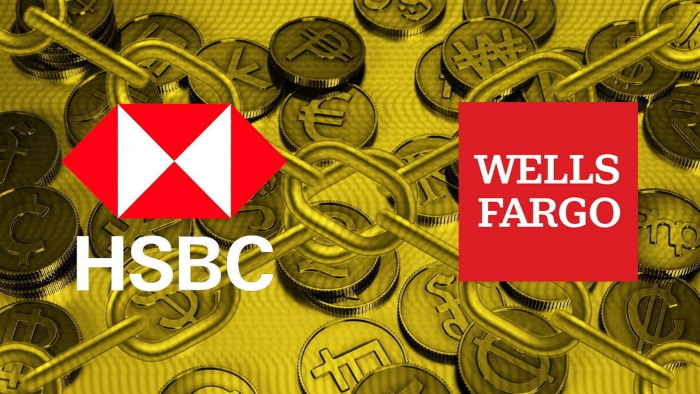How can blockchain platforms make currency trading cheaper?

Simply sign up to the Currencies myFT Digest -- delivered directly to your inbox.
The use of blockchain in the financial services industry is still in its early stages, but two banks are using the technology to make settling currency trades easier, and cheaper.
At the height of the excitement around cryptocurrencies, their underlying blockchain technology was also heralded as a revolutionary way to improve the mundane but crucial plumbing underpinning global capital markets. Proponents of blockchain promote it as being a faster, cheaper and more efficient method of trading and settling deals, and are keen for mainstream financial institutions to embrace a technology that is the backbone of the crypto-trading industry.
But, as the enthusiasm for blockchain subsided, and attention has turned to artificial intelligence developments, few traditional companies are using blockchain for day-to-day processes.
Which banks are using blockchain for currency trades?
British bank HSBC and US lender Wells Fargo are bucking that trend, having partnered in 2021 to use blockchain to settle foreign exchange transactions between them. Vince Hindman, global head of rates and FX solutions at Wells, says the company is “leveraging the technology in a hybrid way”.
The two banks use blockchain to settle transactions of US dollars, sterling, euros and China’s offshore yuan between them on a private ledger, which the lenders say increases efficiency and reduces costs.
They use a shared private ledger — essentially a shared database — to track and manage the currency trades. This has helped cut risks and ease any previous worries around the banks potentially having different information about the same trade.
How does blockchain technology help the banks?
“We’re using distributed ledger technology to orchestrate the matching, netting and settlement of foreign exchange transactions but still using historic payment rails, fiat currency from traditional bank accounts,” says Hindman.
“We can essentially see the same facts concurrently,” he explains. “Historically, in banking, you had your own system of record: your own version of the transactions you’ve executed. In this case, we’re looking real time at the same ledger, so there’s less room for differences.”
Settling trades in this way is especially useful in the case of China’s currency since CLS — the world’s largest foreign currency settlement system, which is widely used by investment banks and central banks around the world — does not settle the renminbi. “A shared ledger can help reduce settlement risk . . . for a currency where there isn’t really a mechanism for us to do that today,” Hindman notes.
What are the other possible applications?
Beyond settling transactions with Wells, HSBC sees more promise for blockchain technology and has been using it to settle foreign exchange transfers internally, too.
Mark Williamson, global head of foreign exchange and commodities partnerships and propositions at HSBC, says distributed ledger technology has been used since early 2018 “for the trades between 18 different balance sheets that we have in HSBC and 13 different currencies”. He calculates that the bank has, so far, settled $6.7tn in trades in this way.
What are the benefits of the technology?
For HSBC and Wells, using blockchain has made their currency settlement easier, faster and cheaper. “There have been savings,” says Williamson. “It is cheaper sending it through this infrastructure than it is through traditional infrastructure.” Hindman adds that the system “is reducing operational cost and friction”.
A survey by consultancy Accenture found that blockchain could cut infrastructure costs for eight of the world’s 10 biggest investment banks by up to $12bn a year.
Yiannis Giokas, senior director of product innovation at Moody’s Analytics, says many companies are currently exploring using blockchain. “In foreign exchange, we have seen a lot of interest in cross-border money transfer and remittance to happen over blockchain,” he says, adding that “a lot of the larger institutions . . . are testing the waters because they want to be ready”. But while interest in blockchain remains high, the real, scalable uses are fewer since “the maturity of the implementation is not yet there”.
“We spent a lot of time on education and awareness,” says Williamson. “The only way that you can truly understand this technology is by using it.”
What are the downsides?
HSBC and Wells’ commitment to using blockchain comes despite a series of scandals engulfing the wider digital assets industry and several significant blockchain programmes being abandoned.
In November 2022, the Australian stock exchange dropped its years-long plan to upgrade the clearing and settlement of shares on to a blockchain-based platform, citing significant technology and governance issues.
That same month, AP Møller-Maersk, one of the world’s biggest container shipping companies, abandoned its blockchain-enabled supply chain project with tech group IBM, saying it was not commercially viable.
These failures underscore that there is a long road ahead for blockchain projects to go from buzzword to mainstream adoption.

Comments